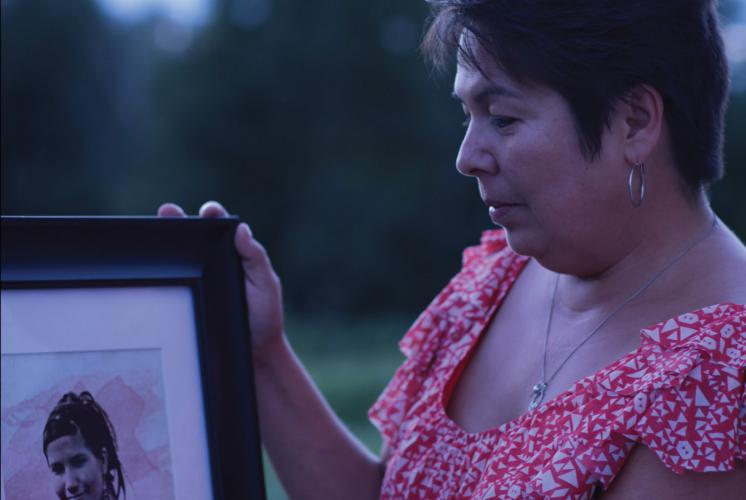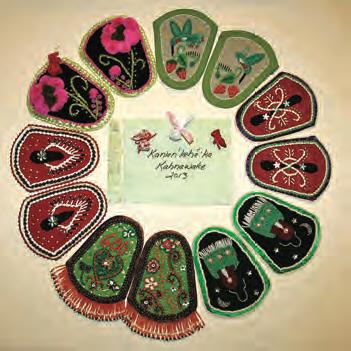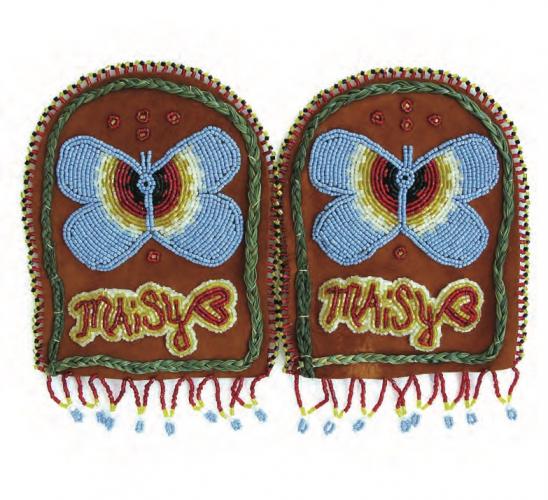Maisy Odjick and Shannon Alexander were last seen together at a high school dance in Maniwaki, Que., in September 2008, according to Maisy’s mother, Laurie Odjick (Anishinaabe).
“I can’t say what happened because not much is known about her disappearance,” says Odjick about her daughter, Maisy, who has been missing since the dance. “Most of what I am all about is getting justice for my daughter. The way the case was handled is unjust for her,” says Odjick at her home on Paganakomin Mikan in the Kitigan Zibi community of Quebec.
Odjick reported to the Kitigan Zibi Police Department that the teenagers were missing, but the police filed the girls as runaways so the department was very slow to move.
“An Amber Alert should have been issued but nothing like that was done for them so we did it as a family,” says Odjick. “We did our own searches as a family. Friends helped. That was something that wasn’t done by the police either. We went searching the areas they were last seen. I went on the river with some friends on their boat. We didn’t know what we were going to find there, but we did it anyway because it was something that needed to be done.”
Maisy and Shannon’s cases are part of a national crisis in Canada called Missing and Murdered Indigenous Women (MMIW). Groups like the Native Women’s Association of Canada (NWAC) and the Royal Canadian Mounted Police (RCMP) have conducted research about the plight.
The Sisters in Spirit campaign was founded by NWAC in 2004 on the belief that “over the past 20 years, approximately 500 Aboriginal women have gone missing in communities across Canada. Yet government, the media and Canadian society continue to remain silent.”
“I think some communities sweep [violence against women] under the rug because they don’t want to believe it happened in their community,” says Odjick. “It’s our families that are living through that. We are the ones who bring awareness. There are community members who support that and communities themselves who support it, but for a while, there was nothing about our missing and murdered women out there except us families on Parliament Hill.”
After five years of research, 582 cases of missing or murdered Aboriginal women and girls have been entered into NWAC’s Sisters in Spirit database. In 2010, the Native Women’s Association concluded that “the intergenerational impact and resulting vulnerabilities of colonization and state policies – such as residential schools, the 60s Scoop and the child welfare system – are underlying factors in the outcomes of violence experienced by Aboriginal women and girls.”
The research blamed “a colonial process that involved a deliberate strategy to undermine the influence and respect held by Aboriginal women and replaces the existing social, economic and political systems of Aboriginal peoples with ones rooted in patriarchy and European understandings of femininity and masculinity.”
In May 2014, the RCMP released a study of 1,181 reported incidents concerning Aboriginal women across all police jurisdictions in Canada since 1980. The review stated that Aboriginal women are 4.3 percent of the Canadian population, but account for 16 percent of female homicides and 11.3 percent of missing women. Unsolved cases of either missing or murdered Aboriginal women number 225.
Many are calling for a public inquiry to learn more about the fate of their loved ones. National headlines blazed the name of 15-year-old Tina Fontaine whose body was found in Winnipeg’s Red River on Aug. 17, 2014. She was reported missing August 9. Fontaine was in provincial care under the child welfare system at the time. Canada’s Prime Minister Stephen Harper rejected calls for a public inquiry, calling Fontaine’s death “a crime and not a sociological phenomenon.”
Odjick supports a public inquiry since families of the missing are calling for one, but she is skeptical about the outcome. “What is an inquiry going to bring? We have already had recommendations from family members. We sat down together and that research has been done for these missing and murdered Aboriginal women. It’s time to do something about it,” she says. “An inquiry is going to bring in recommendations. We have already talked to some of our families and they know what’s needed.
“For me, I would like to see a commission that would have someone who would hear our stories, travel to see families, listen to us, ask us again what we need, what’s lacking. Now they have done that a lot already but you never see any action, it’s just put on a shelf somewhere,” she says.
Odjick gets requests to speak at events like “Wiping Away the Tears,” a yearly gathering of families who struggle with the issue. “That’s where a lot of my healing has happened because that’s where families are going through the same thing I am,” she says.
Odjick supports projects that bring awareness to the crisis, like Walking With Our Sisters (WWOS) founded by Christi Belcourt (Métis) in 2014 and the REDress Project created by Métis multimedia artist Jaime Black in 2011. REDress was galvanized by the case of 19-year-old Helen Betty Osborne (Cree) who was murdered in 1971 by young men who were not charged or sentenced until more than 16 years later.
On social media, Belcourt requested 600 pairs of vamps, the tops or tongues of moccasins, for WWOS to commemorate the women. To date, she has received 1,760. For her, this larger number represents “the last two-, three-, four-hundred years of our colonial history and the abuse of Indigenous women on a grand scale.”
Odjick had a pair of vamps made for Maisy by Shilo Cote (Anishinabe) who designed them with Maisy’s name and a butterfly outlined with sweetgrass. All of the vamps can be seen online at walkingwithoursisters.ca. About the exhibition, Belcourt says, “the whole thing is ceremony, and that’s what’s required in order to properly acknowledge and honor the women’s lives.”
Odjick wants projects like WWOS and REDress to bring recognition about the many lives lost. “Awareness is all we can hope for. This is a big one. They [WWOS] have added on. I know they have added childrens’ vamps too now. It’s getting bigger.”
As for the involvement of Aboriginal offenders in violence against women, the National Women’s Association stated that the healing process “may involve reclaiming traditional gender roles and responsibilities to regain or maintain traditional ways of being. There is a need to establish culturally appropriate healing resources for men who have committed violence, such as men’s support groups, counselling and sitting with Elders.”
The NWAC report concluded, “Ending violence against Aboriginal women and girls lies with both men and women, with both Aboriginal and non-Aboriginal communities, as well as all levels of government. It ends with recognition, responsibility and cooperation. Violence against women ends with restoring the sacred position of Aboriginal women as teachers, healers and givers of life.”
“The hardest thing is I might never know what happened with my daughter,” says Odjick.



